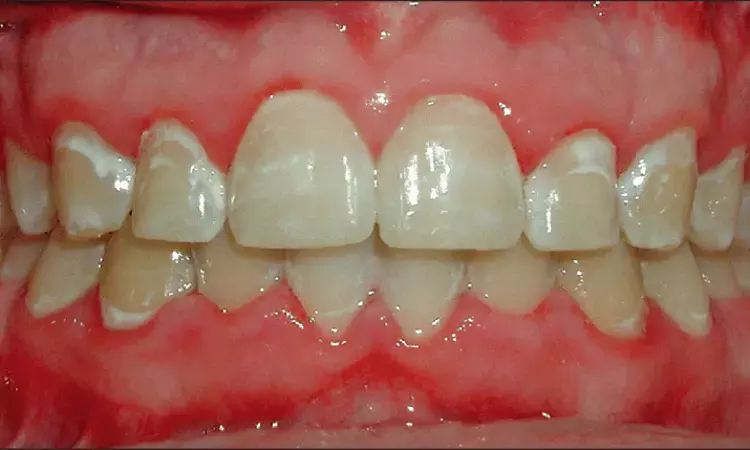- Home
- Medical news & Guidelines
- Anesthesiology
- Cardiology and CTVS
- Critical Care
- Dentistry
- Dermatology
- Diabetes and Endocrinology
- ENT
- Gastroenterology
- Medicine
- Nephrology
- Neurology
- Obstretics-Gynaecology
- Oncology
- Ophthalmology
- Orthopaedics
- Pediatrics-Neonatology
- Psychiatry
- Pulmonology
- Radiology
- Surgery
- Urology
- Laboratory Medicine
- Diet
- Nursing
- Paramedical
- Physiotherapy
- Health news
- Fact Check
- Bone Health Fact Check
- Brain Health Fact Check
- Cancer Related Fact Check
- Child Care Fact Check
- Dental and oral health fact check
- Diabetes and metabolic health fact check
- Diet and Nutrition Fact Check
- Eye and ENT Care Fact Check
- Fitness fact check
- Gut health fact check
- Heart health fact check
- Kidney health fact check
- Medical education fact check
- Men's health fact check
- Respiratory fact check
- Skin and hair care fact check
- Vaccine and Immunization fact check
- Women's health fact check
- AYUSH
- State News
- Andaman and Nicobar Islands
- Andhra Pradesh
- Arunachal Pradesh
- Assam
- Bihar
- Chandigarh
- Chattisgarh
- Dadra and Nagar Haveli
- Daman and Diu
- Delhi
- Goa
- Gujarat
- Haryana
- Himachal Pradesh
- Jammu & Kashmir
- Jharkhand
- Karnataka
- Kerala
- Ladakh
- Lakshadweep
- Madhya Pradesh
- Maharashtra
- Manipur
- Meghalaya
- Mizoram
- Nagaland
- Odisha
- Puducherry
- Punjab
- Rajasthan
- Sikkim
- Tamil Nadu
- Telangana
- Tripura
- Uttar Pradesh
- Uttrakhand
- West Bengal
- Medical Education
- Industry
Incidence of White spot lesions high in adolescents undergoing clear aligner therapy: Study

Incidence of White spot lesions high in adolescents undergoing clear aligner therapy suggets a study published in the Orthodontics and Cranoficial research.
This study was aimed to clarify the incidence, severity, and clinical risk factors for white spot lesions (WSLs) in adolescent patients treated with clear aligners. Pre-treatment and post-treatment intraoral photographs of 203 adolescent patients undergoing clear aligner therapy were retrospectively evaluated to assess the occurrence and severity of WSLs. Information on patients' general oral condition and orthodontic treatment was collected from clinical medical documents, retrospective questionnaires, and ClinCheck® software. Independent risk factors and model performance were determined by multivariate logistic regression and receiver operating characteristic curve analysis. Results: Thirty-five percent of adolescent patients developed WSLs during clear aligner treatment. Logistic regression analysis revealed that the presence of WSLs before treatment (OR 2.484, 95% CI 1.245-4.957), frequency of drinking carbonated beverages (OR 1.508, 95% CI 1.045-2.177), and number of anterior attachments (OR 2.192, 95% CI 1.502-3.198) were risk factors for the occurrence of WSLs in adolescent patients treated with clear aligners (P < .05), whereas the number of times they brushed each day (OR 0.656, 95% CI 0.454-0.947) and frequency of aligner cleaning after eating while wearing them (OR 0.611, 95% CI 0.433-0.861) were protective factors against WSLs (P < .05). The incidence of WSLs was high in adolescent patients treated with clear aligners. Few brushings each day, pre-treatment WSLs, a high frequency of drinking carbonated beverages, a low frequency of aligner cleaning after eating while wearing them, and a high number of anterior attachments are strongly associated with the development of WSLs in adolescent patients treated with clear aligners.
Reference:
Liu Q, Song Z. Incidence, severity, and risk factors for white spot lesions in adolescent patients treated with clear aligners. Orthod Craniofac Res. 2024; 00: 1-10. doi:10.1111/ocr.12791
Keywords:
Incidence, White, spot, lesions, high, adolescents, undergoing, clear, aligner, therapy, study, Liu Q, Song Z
Dr. Shravani Dali has completed her BDS from Pravara institute of medical sciences, loni. Following which she extensively worked in the healthcare sector for 2+ years. She has been actively involved in writing blogs in field of health and wellness. Currently she is pursuing her Masters of public health-health administration from Tata institute of social sciences. She can be contacted at editorial@medicaldialogues.in.


